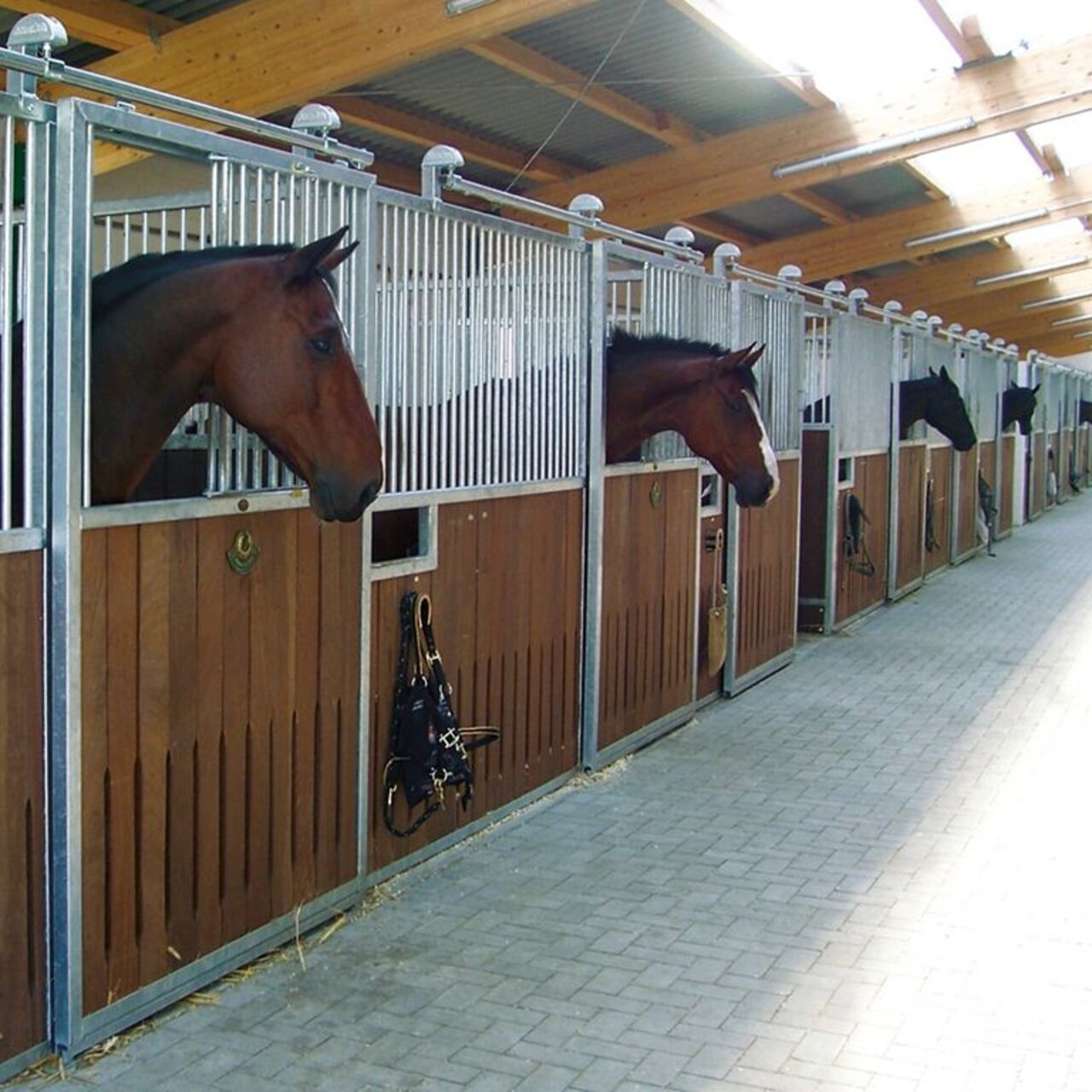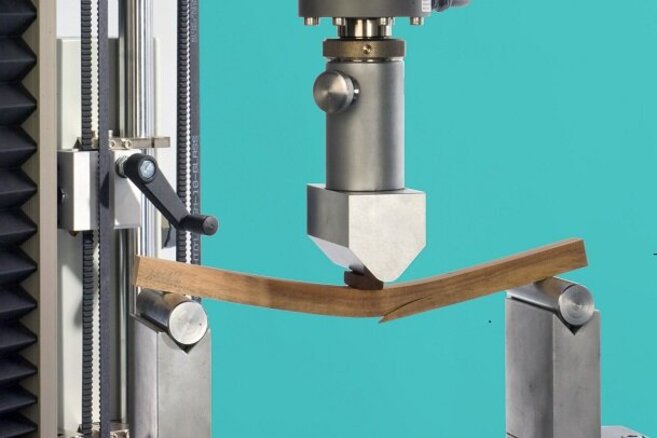Project
Development of kick resistant horse stable constructions

Kick resistance of horse stable infill planks
A methodology for determining the kick resistance to horses will be developed to design appropriate horse boxes with in-fill planks in order to minimise the risk of injury and to increase the development potential of manufacturers of horse boxes.
Background and Objective
For partition walls of horseboxes, which are primarily made of steel frames with wooden infill planks, the law requires kick resistance so that pinching of the hooves and, thus, related serious injury can be avoided. Specifications, upon which horse stalls can be produced according to the requirements of the TierSchG (Animal Welfare Act), however, are only available in insufficient scope and limit the economic development potential of the equine industry and their suppliers from the timber industry. The reasons for this are lack of: information about the level of horse kick forces and methodology and test apparatus for determining the kick resistance of infill planks. But this is essential for a targeted material dimensioning and the development of small and medium-sized enterprises. In practice, horseboxes are typically made of bamboo planks with high phenolic resin content as well as heavy tropical timber from overseas, which apparently meets the requirements. A steadily declining quality, declining availability and shrinking consumer acceptance of the tropical timber and a difficult situation for bamboo planks in terms of reliable quality cast these material into doubt as the best solution for this application. However, testing promising, regionally-available alternative materials in situ is not practical due to the risk of injuries to the animals.
The aim of the outlined project is therefore to determine the kicking out forces of horses to develop a procedure and device for testing the impact resistance of infill planks as well as their design in order to examine native woods and engineered wood planks for their suitability for stable constructions.
Target Group
legislator, stable manufacturer and fitter, horse owners
Approach
In a first step, the kicking forces of horses are determined to develop a test apparatus for testing the impact resistance. Based on the data collected, a pendulum impact tester is designed and dimensioned to determine the impact strength of infill planks. The methodology for examining infill planks will be designed and established. Subsequently, common materials are examined regarding their impact / kick resistance and their dimensions will be optimised in order to meet the requirements. Afterwards infill planks will be made of domestic hardwoods, dimensions will be optimised and their suitability will be evaluated for the use in stable constructions. In addition to solid wood, various impact-resistant engineered wood planks (e.g., laminated veneer lumber and Scrimber) will be manufactured and tested.
Our Research Questions
- What forces have an impact when horses kick and which have to be taken into account when dimensioning infill planks?
- What is the optimal design for a device and methodology in order to test infill planks regarding horse-kick resistance?
- What dimensions of infill planks are suitable to be considered kick resistant?
- What are the domestic species of wood and dimensions that are suitable as infill planks?
- Are veneer laminated wood and Scrimber particularly impact-resistant and therefore suitable for use as infill plank material?
Results
The results of preliminary investigations prior to the project are available here: Benthien et al., 2012
Thünen-Contact

Involved Thünen-Partners
Involved external Thünen-Partners
-
Deutsche Landwirtschafts-Gesellschaft (DLG)
(Frankfurt/M., Deutschland) -
Röwer & Rüb GmbH
(Thedinghausen, Deutschland) -
KS Schlüter Im- & Export GmbH
(Riede, Deutschland)
Funding Body
-
Federal Ministry of Agriculture, Food and Regional Identity (BMLEH)
(national, öffentlich)
Duration
9.2015 - 8.2018
More Information
Project funding number: 741822
Project status:
finished
Downloads:
- Vortrag Innovationstage Bonn, 2016: "PferdeTritt: Durchtrittbeständigkeit von Boxenabtrennungen in der Pferdehaltung" (pdf Datei: 18,4 MB)
- Auszug aus dem Tagungsband "Innovationstage 2016" (pdf Datei: 1,27 MB)
- Thuenen Working Paper 104 (pdf: 4,82 MB)
- Ausfachungsbohlen für Pferdeboxen auf dem Prüfstand, Holzzentralblatt 2016 (pdf Datei: 1,19 MB)








